Jerod's answer contains almost everything you need, along for instance yauheni_selivonchyk's other answer on how to add custom images to Tensorboard.
It is then only a matter of putting everything together, i.e.:
- Implementing methods to pass plotted images to summaries (as RGB arrays)
- Implementing a method to convert the matrix data into a prettified confusion image
- Defining your running evaluation operations to obtain the confusion matrix data (along other metrics) and preparing a placeholder and summary to receive the plotted image
- Using everything together
1. Implementing methods to pass plotted images to summaries
import matplotlib
import matplotlib.pyplot as plt
import pandas as pd
import seaborn as sns
import numpy as np
import tensorflow as tf
# Inspired by yauheni_selivonchyk on SO (https://stackoverflow.com/a/42815564/624547)
def get_figure(figsize=(10, 10), dpi=300):
"""
Return a pyplot figure
:param figsize:
:param dpi:
:return:
"""
fig = plt.figure(num=0, figsize=figsize, dpi=dpi)
fig.clf()
return fig
def fig_to_rgb_array(fig, expand=True):
"""
Convert figure into a RGB array
:param fig: PyPlot Figure
:param expand: Flag to expand
:return: RGB array
"""
fig.canvas.draw()
buf = fig.canvas.tostring_rgb()
ncols, nrows = fig.canvas.get_width_height()
shape = (nrows, ncols, 3) if not expand else (1, nrows, ncols, 3)
return np.fromstring(buf, dtype=np.uint8).reshape(shape)
def figure_to_summary(fig, summary, place_holder):
"""
Convert figure into TF summary
:param fig: Figure
:param summary: Summary to eval
:param place_holder: Summary image placeholder
:return: Summary
"""
image = fig_to_rgb_array(fig)
return summary.eval(feed_dict={place_holder: image})
2. Converting matrix data into a prettified confusion image
(here is an example, but it's up to what you want)
def confusion_matrix_to_image_summary(confusion_matrix, summary, place_holder,
list_classes, figsize=(9, 9)):
"""
Plot confusion matrix and return as TF summary
:param matrix: Confusion matrix (N x N)
:param filename: Filename
:param list_classes: List of classes (N)
:param figsize: Pyplot figsize for the confusion image
:return: /
"""
fig = get_figure(figsize=(9, 9))
df = pd.DataFrame(confusion_matrix, index=list_classes, columns=list_classes)
ax = sns.heatmap(df, annot=True, fmt='.0%')
# Whatever embellishments you want:
plt.title('Confusion matrix')
plt.xticks(rotation=90)
plt.yticks(rotation=0)
image_sum = figure_to_summary(fig, summary, place_holder)
return image_sum
3. Defining your evaluation operations & Preparing placeholder
# Inspired by Jerod's answer on SO (https://stackoverflow.com/a/42857070/624547)
def add_evaluation_step(result_tensor, ground_truth_tensor, num_classes, confusion_matrix_figsize=(9, 9)):
"""
Sets up the evaluation operations, computing the running accuracy and confusion image
:param result_tensor: Output tensor
:param ground_truth_tensor: Target class tensor
:param num_classes: Number of classes
:param confusion_matrix_figsize: Pyplot figsize for the confusion image
:return: TF operations, summaries and placeholders (see usage below)
"""
scope = "evaluation"
with tf.name_scope(scope):
predictions = tf.argmax(result_tensor, 1, name="prediction")
# Streaming accuracy (lookup and update tensors):
accuracy, accuracy_update = tf.metrics.accuracy(ground_truth_tensor, predictions, name='accuracy')
# Per-batch confusion matrix:
batch_confusion = tf.confusion_matrix(ground_truth_tensor, predictions, num_classes=num_classes,
name='batch_confusion')
# Aggregated confusion matrix:
confusion_matrix = tf.Variable(tf.zeros([num_classes, num_classes], dtype=tf.int32),
name='confusion')
confusion_update = confusion_matrix.assign(confusion_matrix + batch_confusion)
# We suppose each batch contains a complete class, to directly normalize by its size:
evaluate_streaming_metrics_op = tf.group(accuracy_update, confusion_update)
# Confusion image from matrix (need to extend dims + cast to float so tf.summary.image renormalizes to [0,255]):
confusion_image = tf.reshape(tf.cast(confusion_update, tf.float32), [1, num_classes, num_classes, 1])
# Summaries:
tf.summary.scalar('accuracy', accuracy, collections=[scope])
summary_op = tf.summary.merge_all(scope)
# Preparing placeholder for confusion image (so that we can pass the plotted image to it):
# (we basically pre-allocate a plot figure and pass its RGB array to a placeholder)
confusion_image_placeholder = tf.placeholder(tf.uint8,
fig_to_rgb_array(get_figure(figsize=confusion_matrix_figsize)).shape)
confusion_image_summary = tf.summary.image('confusion_image', confusion_image_placeholder)
# Isolating all the variables stored by the metric operations:
running_vars = tf.get_collection(tf.GraphKeys.GLOBAL_VARIABLES, scope=scope)
running_vars += tf.get_collection(tf.GraphKeys.LOCAL_VARIABLES, scope=scope)
# Initializer op to start/reset running variables
reset_streaming_metrics_op = tf.variables_initializer(var_list=running_vars)
return evaluate_streaming_metrics_op, reset_streaming_metrics_op, summary_op, confusion_image_summary, \
confusion_image_placeholder, confusion_image
4. Putting everything together
A quick example how to use this, though it needs to be adapted to your training procedure, etc.
classes = ["obj1", "obj2", "obj3"]
num_classes = len(classes)
model = your_network(...)
evaluate_streaming_metrics_op, reset_streaming_metrics_op, summary_op,
confusion_image_summary, confusion_image_placeholder, confusion_image = \
add_evaluation_step(model.output, model.target, num_classes)
def evaluate(session, model, eval_data_gen):
"""
Evaluate the model
:param session: TF session
:param eval_data_gen: Data to evaluate on
:return: Evaluation summaries for Tensorboard
"""
# Resetting streaming vars:
session.run(reset_streaming_metrics_op)
# Evaluating running ops over complete eval dataset, e.g.:
for batch in eval_data_gen:
feed_dict = {model.inputs: batch}
session.run(evaluate_streaming_metrics_op, feed_dict=feed_dict)
# Obtaining the final results:
summary_str, confusion_results = session.run([summary_op, confusion_image])
# Converting confusion data into plot into summary:
confusion_img_str = confusion_matrix_to_image_summary(
confusion_results[0,:,:,0], confusion_image_summary, confusion_image_placeholder, classes)
summary_str += confusion_img_str
return summary_str # to be given to a SummaryWriter

